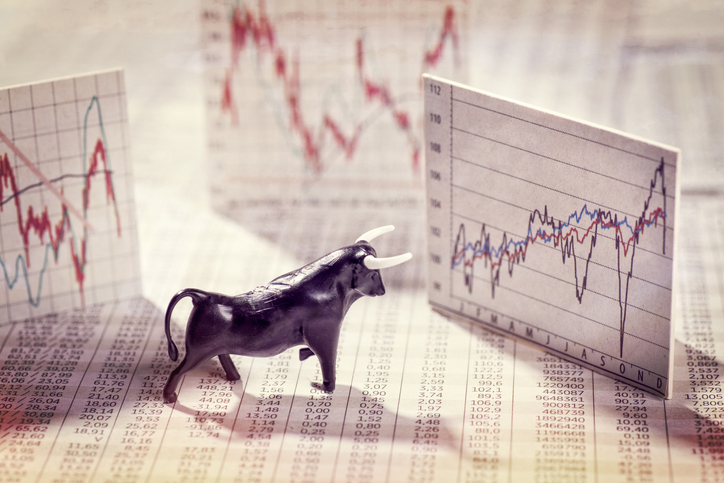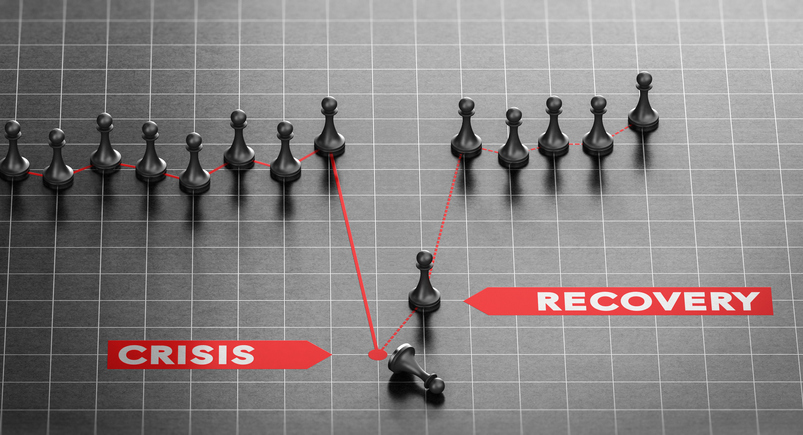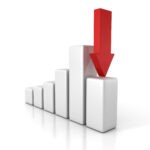Author Archives: vlm

Election 2020 – The Day After
It is the morning after the 45th Presidential Election and like most of you I am here scratching my head at “what comes next”. We anticipated this would likely be an election like never before and so far it is living up to expectations. It could certainly be days before we have certain outcome. We saw the broad-based markets pull back again through most of the month of October, likely in anticipation of a complicated election decision. If you have been following along with my videos you have heard me mention that markets tend to not actually care who becomes president. They can quickly price in policy changes and adjust. What markets do not like however is uncertainty. Going back to 2000 we can see how markets reacted last time we experienced a contested election. Markets fell over 7% during the time between the election and December 13th when the Supreme Court declared George Bush the winner. Therefore, it is fascinating to me to see markets having such a positive surge today despite increasing uncertainties about our election results. 2020 continues to live up to that now despised word “unprecedented”. It was also interesting to see significant money quickly move back into technology overnight. We had seen big tech come under selling pressure over the past two months. Many analysts thought that may have pointed to the market predicting that Joe Biden would win as there were positive flows into areas that would do well if there were hefty stimulus packages passed. As technology futures began seeing huge inflows last night, some wondered if this meant investors were “shifting their bets” that Donald Trump would win. The outcome remains anyone’s guess but the market movements have been fascinating to watch.
What should investors do in spite of all this “noise” we currently have? Now more than ever it is so important to make sure you are following a rules-based approach to your investments. Using emotion to guide your actions will almost always work out against you. When math and rules are your driving force, it tends to help you see through the static even if it does not always “feel right”. We let our winners run and cut our losers quick. If your positions are not working now, they probably won’t work later. Using relative strength allows us to concentrate on areas of the market that are strong and avoid areas of weakness that become drags on performance. It is also important to understand how much risk and volatility is present in your portfolio. If you were uncomfortable during the pullback in September and October, you may want to consider adding a few “hedge” positions to alleviate some volatility. By being invested in the strongest areas of the market, our models have tracked the broad-based indexes closely while still holding a significant portion of fixed income and cash. We will likely be adding additional equity positions very shortly. The technicals tell us when to add positions and where to add them to. This means that the ultimate election outcome will not affect our decisions because the math and rules are always guiding our next steps. I know these remain uncertain times for so many investors and if you have any questions, I would be happy to help however I can. Feel free to call or email me. Have a great day!
 Ashley Rosser, President
Ashley Rosser, President
Prior to her career in the financial services industry, Ashley earned her Bachelor of Science in Nursing from Cedarville University.
Ashley decided to make a career change from her ten years within the healthcare industry as a pediatric emergency room nurse to retirement and 401K investment planning. She joined Victory Wealth Partners in 2008 after obtaining her Series 65 professional financial license and went on to earn her AIF (Accredited Investment Fiduciary) professional designation from the Center for Fiduciary Studies.

Markets Face Headwinds Headed Into October
Markets face headwinds rather than tailwinds headed into October. September was ripe for a sell off. We had been warning that the signs were all there of a market that was overstretched, overvalued, and overdue for a pullback. The S&P 500 was trading two standard deviations above its moving averages. As a reminder, moving averages act like a magnet pulling markets towards them when they trade too far above or below them. The further away they move, the swifter (and more painful) a reversion can be. For example, during this current correction the NASDAQ was down over 12%. While the sell-off was not unexpected, it still caught investors off guard who had become accustomed to the market “only going up”.
So here we are on the last day of September and you may be asking your self “what now”? We have seen the market have a “reflexive rally” in the past few days. This is not surprising either as the markets are all relatively oversold on the short term. It is important to make mention that despite the recent advances, we have been unable to break through the 50 day moving average above us. This points to possible additional selling pressure for the markets. If we are unable to break above the 50 day, it is possible to see a retracement down to the 200 day moving average, or an additional 7.2% decline.
Markets face headwinds rather than tailwinds currently. It appears likely that any additional stimulus program will not be passed, at least not until after the election. The stock market was counting on more stimulus and economic recovery indicators have begun to shift disappointedly as the extra stimulus has now gone dry. The Federal Reserve also made it clear that we should not expect new aggressive intervention from them for now. They have punted the football back to congress, saying it is now in their court to pass a new program. This will likely further concern markets. We are also still dealing with the effects of COVID-19, and the uncertainty of what the winter months may bring in terms of resurgences. We remain in an economic recession and corporate earnings continue to dip. 2021 S&P 500 earnings estimates are down nearly $30 per share since the original estimates made in January 2020. Did I mention we have a presidential election coming up?
With all the headwinds we see, as well as the fact that markets are still very overvalued when compared to longer term means we think investors should remain cautious for now. If you were uncomfortable during this current pullback, you may be taking more risk than necessary. You could consider using any short-term rallies to rebalance your portfolio and adding in some defensive positions until the rest of the headwinds have cleared. I am not suggesting you need to sell all your equity positions, just consider trimming them temporarily. We remain invested and our tactical allocations have continued to perform very well compared to the major indexes. The power in using relative strength and positive momentum to choose allocations means we do not have to take on more risk than we are comfortable with. It also allows us to choose areas that are performing strongly, while excluding the laggards that wind up being drags on performance.
There is no crystal ball when it comes to investing. However, we think investing using emotions, hope, and feelings are not a good strategy. That’s why we rely on math and rules. If you have any questions, you can always email me at ashleyr@victoryfiduciary.com. I am happy to help any way I can. Have a great month!
 Ashley Rosser, President
Ashley Rosser, President
Prior to her career in the financial services industry, Ashley earned her Bachelor of Science in Nursing from Cedarville University.
Ashley decided to make a career change from her ten years within the healthcare industry as a pediatric emergency room nurse to retirement and 401K investment planning. She joined Victory Wealth Partners in 2008 after obtaining her Series 65 professional financial license and went on to earn her AIF (Accredited Investment Fiduciary) professional designation from the Center for Fiduciary Studies.

Tread Carefully in Today’s Market Climate
It has been an interesting month for the stock market so far, especially considering we are only nine days in. We have seen a significant increase in volatility as compared with August. In general September tends to be a weaker month for the market, even without a weak economic backdrop. You may recall last month I discussed the importance of paying attention to the technical moving averages for the market. Moving averages act like a magnet, pulling markets back to them when they become grossly disconnected.
Last Wednesday, during my Midweek Market update I sounded the alarm that the NASDAQ was trading two standard deviations above its moving averages and that a pullback would be unavoidable. We were just too extended for it to be sustainable. The S&P 500 was also trading significantly above its averages, just not quite to the extent of the NASDAQ. The next day we began to experience a significant selloff across the market over the next three trading days. As of Tuesday’s close, the NASDAQ was down 10% and the S&P 500 was down 7%. Most importantly, both indexes are now sitting directly on their 50 day moving average. It is a good reminder that technicals really do matter in the stock market, even if emotional exuberance seems to say otherwise.
The level of greed and speculation occurring in the market makes some advisors have flashbacks to what happened back in the late 90s. Knowing what happened then and is happening now makes me uncomfortable. It feels like history is repeating itself in some ways. Markets remain extremely overvalued at the same time our country is experiencing significant economic weakness. Investor sentiment seems to be “the market can only go higher”. Call options are at all time highs, meaning that investors are “betting” that the market will go higher and not using any type of hedge in their portfolios against downside risk. Many were caught off guard these past few days as markets sold off quickly. Sadly, many inexperienced investors found out that trading options without understanding risk can sometimes turn around and bite you fast. It is important to understand that markets could absolutely turn lower, an additional correction of 10% would not be out of the question.
So what should investors do now? On Wednesday, the market was experiencing a bit of a reflexive rally, which is expected after such a sharp pullback. The question many ask is should I buy stocks now or should I wait? There is fine line between “buying the dip” and “trying to catch a falling knife”. As an investment committee we are concerned about technical data that indicates there could be some additional headwinds for the market, at least in the short term. So in short, we continue to tread carefully. Our five equity positions continue to perform strongly, outpacing the indexes. They also held up remarkably well over this past pullback, further reinforcing why using relative strength to choose your investments can help you outperform the markets. We will be adjusting our current allocations and adding asset classes once we have confirmation that this pullback is complete. We just do not want to try to handle this pullback like a teddy bear, and then find out it is actually a porcupine. As always, please reach out to me if you have any questions. I would love to talk to you. Have a wonderful day.
 Ashley Rosser, President
Ashley Rosser, President
Prior to her career in the financial services industry, Ashley earned her Bachelor of Science in Nursing from Cedarville University.
Ashley decided to make a career change from her ten years within the healthcare industry as a pediatric emergency room nurse to retirement and 401K investment planning. She joined Victory Wealth Partners in 2008 after obtaining her Series 65 professional financial license and went on to earn her AIF (Accredited Investment Fiduciary) professional designation from the Center for Fiduciary Studies.

Lighthouse or Barge
I know it has only been a month since I last wrote but it sure feels like it has been a year. I struggled to summarize all the actions and updates we have seen in the past four weeks. The stock market continues to surprise us, sometimes even with significant swings in the same trading day. As I sat writing this, the Dow Jones Industrial Average was trading up about 1.4%. I took a short break 45 minutes later and to my surprise saw that it was now down -.4%. That is over a 400 point reversion in under an hour and speaks to the continued volatility and uncertainty we are seeing day to day within the market.
If you have been following along with me for the past few months, you know our firm has been extremely concerned about the current market environment. Stocks in the S&P 500 are currently trading using 26X earnings. The typical ratio is 16.5 and it means that the market is significantly disconnected from corporate earnings. It does seem that the market is saying that valuations are not important. However, if our recovery continues to slow, and employment and wages continue to worsen, they will. The current extremes shown between market and corporate profit deviations should be sounding alarms.
Speaking of deviations, the NASDAQ is current trading 23% above its 200 moving day average. Averages work as a gravitational pull to bring prices closer in line to it. That is the way averages work. The further extended a stock gets from its moving average, the more likely the pullback will be significant. I use the analogy it is like a rubber band being stretched and stretched, eventually it will be unable to be stretched any further and it will snap back as far as it was originally pulled.
The significant concentration amongst the major indexes points to increasing weakness in the market. Currently over 26% of the S&P 500 return year to date is a result of Apple, Amazon, Google, Facebook and Microsoft. Additionally, if we look at market capitalization those same five companies make up the same amount as the bottom 394 companies in the index. These are staggering numbers that point to the overall weakness, despite the recovery we have seen.
The Federal Reserve has undoubtedly assisted with “helping” the market by injecting massive amounts of liquidity in March and April. I say “helping” because what we are now left with are waters that are foggy and difficult to navigate because many numbers have become skewed. It is now tough to see if the light we see in the distance is the safety of the lighthouse or a runaway barge that is heading straight towards us. The math and rules tell us that we are not out of danger and we should continue to move methodically.
We did take three minority equity positions last month using our math and rules-based process. We tactically chose areas in consumer cyclicals, industrials, and online retail as they show great opportunity based upon their relative strength and momentum. We also steered clear of areas with decreasing relative strength and momentum as they will typically become drags on performance. We are still avoiding areas that are heavily weighted in the major indexes as we see the elevated risks outlined above. Since taking our three positions, they have collectively seen returns of 9.85% compared with S&P500 return of 3.86% over the same time period. This is the advantage of using a tactical approach that uses math to make investment decisions.
As more of the fog continues to clear, we will continue to take new equity positions. We continue to be aware of the increased risk within the markets and will manage our portfolios accordingly. Market greed is at all- time highs, investor sentiment is that “stocks can only go higher” and put- to- call ratios are extremely low. These are typically seen right before markets see a top. I am not saying that the market cannot go higher in the short term. But I am saying it would not be prudent to ignore all the headwinds and risks that currently exist for the market. Complacency, especially during market tops always wind up being detrimental. We need to know if the distant light we see is coming from the safety of the lighthouse or from the runaway barge heading straight for us. My job as an advisor is to protect my client’s principal, reduce risk, create wealth, and avoid being capsized by the unexpected barge: all at the same time.
Best
Ashley Rosser AIF BSN

When the Facts Change
Renown economist John Maynard Keynes is commonly accredited with saying, “when the facts change, I change my mind.” In the spirit of this mindset, we would like to take a second to discuss some key facts we are observing in the stock market today that are devoid of emotions like fear or hope that dominate today’s headlines.
The first analysis we will do is looking under the hood of some of the major indices that have outperformed so far this year. Of the three major indices, the Nasdaq 100 Index has far and away been the outperformer so far this year. The Nasdaq 100 is an index of 100 of the largest, most actively traded U.S companies listed on the Nasdaq Stock Exchange. When looking under the hood, however, the makeup of its performance so far this year is concerning. The top five companies in the Nasdaq 100 are megacap companies that should be familiar: Apple, Microsoft, Amazon, Google, and Facebook. As of last Monday’s (July 13th) close, these five companies make up over 77% of the Nasdaq 100’s return year-to-date (YCharts). For comparison, these five companies only make up around 46% of the index’s holdings. When an index’s performance is so heavily concentrated in a select group of stocks, it typically is not indicative of a healthy market environment. In the same way you would diversify your own investments, having such narrow leadership in an index can spell trouble when and if those leaders begin to lose steam.
In the same way the Nasdaq 100 has narrow leadership, both the cap-weighted S&P 500 technology and consumer discretionary indices have seen megacaps skew their performance. As a refresher, a cap-weighted index is an index that bases the size of each holding off their market capitalization (stock price times the number of shares outstanding). Currently, Microsoft and Apple make up just under 44% of the cap-weighted technology index, yet they make up over 86% of the index’s performance year-to-date (YCharts). Likewise, Amazon makes up nearly 26% of the cap-weighted consumer discretionary index. Amazon’s weighted performance means that it currently makes up 17.6% of the index’s 4.9% return year-to-date, meaning that the other holdings are accounting for a return of -12.7%. With heavy concentration like this, it’s not surprising that the dispersion between the cap-weighted sectors and the equal-weight sectors is abnormally high. Over the previous five years, the average outperformance by the cap-weighted technology sector versus the equal-weight technology sector was around 1.8%; this year, it has outperformed the equal-weight technology index by over 15%. Similarly, the average outperformance by the cap-weighted consumer discretionary index over the past five years has been 6.5%; this year, it has outperformed its equal-weight counterpart by nearly 33%! Just like the Nasdaq 100, even certain sectors with exposure to these megacap leaders are top-heavy to say the least.
Another way to observe narrowing leadership is to review the top five holdings of the S&P 500 relative to history. Currently the top five holdings in the S&P 500 make up over 25% of the index. For comparison’s sake, the top five made up just over 17% of the index at the end of 2019. When you see the concentration of the top five holdings spike like this, it is usually due to three possibilities: the top five are way outperforming the rest of the index and increasing their size, the rest of the index is doing poorly relative to the larger names, or both possibilities occurring at the same time. In today’s environment, it appears that both are happening; while the megacaps continue to outperform, the rest of the index continues to lag considerably behind them. It is worth noting that not only is this the largest concentration for the top five stocks since 1964, but it is also the largest year-over-year increase since the jump from 1998 to 1999 during the Dot-Com Bubble (S&P). While there is no guarantee that we are on a collision course with a similar crash of that magnitude, it is worth keeping an eye on this group.
The last fact we would like to mention is the current valuation of the market. The Buffet Indicator, a valuation indicator coined by Warren Buffet, observes the Wilshire Total Stock Market Index (a cap-weighted index of over 3,400 U.S. companies) versus U.S. GDP. Today this valuation indicator sits not only just below its historical high but is even higher than its peak during the Dot-Com Bubble. In short, the Buffet Indicator currently says that the market today is severely and historically overvalued relative to the fundamentals of our economy.
While it can be confusing to see market indices rise when it seems the rest of the economy is doing poorly, we thought it would be best to provide some insight into what is actually driving these indices. Narrow leadership in the megacaps can seemingly keep things afloat, but the risk of these losing steam and joining the rest of the laggards in the index causes us to continue to remain cautious; the market is going to need greater participation in all areas before this can be considered a healthy market environment. We will continue to monitor the economy and the markets on both the fundamental and technical sides, and we will be sure to notify you of any material changes we observe. In the meantime, don’t hesitate to reach out if you have any questions or concerns. Join Ashley every Wednesday as she provides her Mid Week Market Update video on both our Youtube and Facbook pages.
Be Well,
Ashley Rosser AIF, BSN
The opinions voiced in this material are for general information only and are not intended to provide specific advice or recommendations for any individual. All performance referenced is historical and is no guarantee of future results. All indices are unmanaged and not be invested into directly. The Standard & Poor’s 500 Index is a capitalization-weighted index of 500 stocks designed to measure performance of the broad domestic economy through changes in the aggregate market value of 500 stocks representing all major industries.

Independence Day Edition of Mullica Hill Money Matters
Welcome to the Independence Day edition of Mullica Hill Money Matters. Its hard to believe we are entering into the first week of July. I think it is also hard to believe how different life remains just a few short months after we first heard the words “Corona Virus”. In true American spirit, I have been proud and encouraged watching how so many have persevered to make the best of a very tough situation. It is that unique perseverance that will allow America to come out on the other side of this current battle victorious.
However, I think it is fair to say that the next few months will likely have a few unexpected fireworks explosions to our economic recovery and investors should be prepared for what this could potentially mean in both the short and intermediate term.
Follow us on Facebook and check in every Wednesday for our latest video.
Our Investment Committee remains cautious regarding our investment allocations. I have said all along that I believed the market has priced in a near perfect recovery that has left no room for disappointment. Last week, as COVID began to surge in states like Florida, California, Texas and Arizona, the market was clearly rattled. Adding an additional concern was seeing states needing to backtrack and even halt their re-opening plans. You see, the market is not concerned with the virus itself but rather how its continued presence will hamper the US economic recovery. On Friday, we watched as the S&P 500 closed below its 200 moving day average. The 200-day SMA, which covers roughly 40 weeks of trading, is commonly used in stock trading to determine the general market trend. If a stock price remains above the 200-day SMA on the daily time frame, the stock is generally considered to be in an overall uptrend. It was able to reclaim its position above on Monday but a second decline below could show signs of increasing weakness of the index. The Dow Jones Index also showed concerning signs of weakness as it closed just a few points above 25,000 with Friday’s sell off. If the economic recovery continues to stall, this will likely disappoint investors.
We also continue in our belief that the market is significantly overvalued compared to its P/E (Price to Earnings) ratios. While it is true that the stock market is not the economy, it is directly tied to corporate earnings. Right now however, the market seems to be detached from this fact. It is interesting that as we went into 2020, the S&P 500 was pricing in earnings at $160 per share. We are currently pricing in earnings of $180 per share. That is a serious disconnect considering what we know about our current earnings. The only way to rectify this will be for earnings to come up or stock valuations to come down. The Atlanta Federal Reserve is estimating Q2 corporate earnings to come in at a historic negative 47%. History shows us that it is always valuations that wind up trending down when the market becomes this disconnected. The S&P 500 is also severely overconcentrated as about 25% of its performance has come from 5 stocks. We have not seen concentrations like this since the 70s and it points to weakness in the rest of the index. The Buffet indicator is currently showing a market overvaluation of 145.7%. The last time stocks were this overvalued was right before the Dot Com Bubble burst. Its no wonder why Warren Buffet is currently sitting on 137 BILLION dollars in cash right now.
Simply put, the market is currently full of greed and emotion. As investment managers, it is important we remain unemotional as we make investment decision for our client. Most investment mistakes happen because we allow our emotions to get in the way. As such, we choose to remain committed to using our math and rules-based process to steer our next steps. Currently, our program continues to recommend using defensive investment allocations. As such, we are using a mix of cash and fixed income options for our individual investors. We will remain there until we are given additional reassurance that the equity market risk no longer out weighs the potential reward. We are interested in investing in the areas of greatest potential, taking risk into account. When our indicators turn, we will concentrate in the areas showing greatest strength while avoiding weaker areas. This allows us to avoid areas that would drag down our performance.
We are looking forward to the coming months as we can hopefully prepare to round the corner of this historic time. We just need to remain prudent and patient as we have concerns there are a few more unexpected fireworks that have yet to appear. As the famous investor Charlie Munger once said, “the big money isn’t in the buying and the selling but the waiting.” Victory Wealth Partners wishes you a very happy Independence Day and continued health and safety for you and your family.
 Ashley Rosser, President
Ashley Rosser, President
Prior to her career in the financial services industry, Ashley earned her Bachelor of Science in Nursing from Cedarville University.
Ashley decided to make a career change from her ten years within the healthcare industry as a pediatric emergency room nurse to retirement and 401K investment planning. She joined Victory Wealth Partners in 2008 after obtaining her Series 65 professional financial license and went on to earn her AIF (Accredited Investment Fiduciary) professional designation from the Center for Fiduciary Studies.

Is the New Bull Market Here?
Since my last time with you, a lot has happened regarding the stock market and much of that on the surface does appear to be bullish. Bullish simply means that the stock market is rising and is expected to continue rising. We have seen the stock market make an unbelievable rebound since its market lows on March 23rd. Last week we finally saw the S&P 500 break through the 200 moving day average after weeks of stagnation. As a result, many are asking “ is the bull back and is it now a buyer’s market?” Based upon what we see and know, I would say not quite yet.
I want to spend some time to help you understand where we are regarding the economy and the stock market and how that could potentially impact us in the short run. There seems to be a significant disconnect between the stock market and reality. The stock market is significantly overvalued currently. The P/E (Price to earnings) ratio of the S&P500 at the end of 2019 was $140. This measures the value of the index versus its earnings. Current P/E ratios stand at $182. This means the market is overvalued today compared to December. Normal PE ratios are around 116. Seems hard to believe when we think about where current corporate earnings stand. Eventually, this disparity will need to be reconciled and for that to happen, earnings must increase or values must decrease. Increase in corporate earnings in the short run seems unlikely, so we know the alternative.
Market index performance is also extremely concentrated. There are 5 stocks who are responsible for 20% of the overall return. This indicates weakness among the vast majority of the other companies that comprise the index. The last time we saw indexes this concentrated was in the 70s.
Weakness is also apparent in the overall economy. Q2 GDP is estimated to fall to -30%. Currently, over 40 million Americans have filed for unemployment during the pandemic. Goldman Sachs predicts we could see unemployment numbers of up to 25%. Federal Reserve Chairman Jerome Powell has said that 40 percent of U.S. households earning less than $40,000 a year lost their jobs in March. A May 15th article from the University of Chicago (Becker Friedman Institute) cited that 42% of recent layoffs will result in permanent job loss. It is nearly impossible to wrap our heads around what these numbers mean and what the impact will be on our country’s economy. We also believe this is not the end of the bad news, but rather the beginning as the impact of the shutdown is just now starting to be understood.
So, what gives? Despite all we know currently, and what we are expected to see in the future, why does the market continue to ignore all the bad news and just keep climbing? I believe the market is currently “riding on hope”. It is pricing in an absolute best case scenario that involves America quickly getting fully back to work, recovering lost earnings, GDP rapidly rising, having a vaccine by end of the year, and that there will be no secondary COVID-19 surges. Essentially, we have priced in a perfect recovery story, leaving no room for disappointment. There is a current disconnect between what investors expect and what is reality. We simply cannot continue to completely ignore the current technical and fundamentals of the market forever. Long term analysis shows us that eventually these matters will have to reconcile. When that happens, the market could have their day of reckoning.
What does this mean for investors? Our investment committee, has decided to begin taking fixed income positions inside our portfolios very shortly. Our relative strength indicator is now showing there is a good opportunity in this space. However, we believe that the risk remains higher than the potential reward and believe the better opportunity to increase equity risk will come later this summer. We will continue to follow our math and rules-based program to guide our investment decision making process. We are hopeful that we will soon begin to re-enter the equity market tactically. We will include asset classes and sectors that show positive relative strength and believe there will be tremendous opportunity when that happens. We just are not quite there yet. We continue to choose safety for our clients as hope alone is not a prudent investment strategy. As Charlie Munger once said “The big money isn’t made in the buying and selling but in the waiting.”
If you would like to follow our weekly video series where Ashley will be discussing the current market and pertinent economic updates, please follow us on Facebook. Please stay well and if you have questions about your current portfolio mix given these extraordinary times, we would love to have a conversation with you.
Be Well,
Ashley Rosser AIF BSN

Having Buy Discipline in the Eye of the Storm
I hope this finds you and your family safe and healthy. This month I would like to continue in our discussions of the importance of your advisor having both a buy and sell discipline. The last article I wrote detailed our firm’s math and rules based “Sell Discipline” and why we made the decision to move all our client’s assets to cash and stable value funds. Some of you may have seen last month’s rally and wondered if we have moved our positions back to the market. The answer is unequivocally: no. Rather I compare the current situation to being in the eye of the hurricane. After experiencing the devastation of a hurricane’s initial impact, it is easy to let your guard down as the winds subside and rain lets up. You may want to leave the safety of your shelter and venture outside. However, if you know the calm is merely temporary and danger is still close you will probably want to seek safety until the storm has truly passed.
April’s rally was not unprecedented. In fact, history has shown us that often after a significant downturn, the market will frequently have upticks before falling again. While we can’t know for certain what pattern this current market will follow, we do have our two guiding principles: history and math. In January 2009 saw the market up over 24% off the bottom before later setting a new low. Also, the head fakes during the 1987 crash, Dot-Com Bubble, and Great Recession took an average of 89 days, meaning that it took an average of nearly three months before setting new lows. The government’s significant financial intervention was a huge factor in helping to subdue the markets. The government’s quick response was unlike any other we have seen in past market crashes, and it certainly went a long way to reassure investors. However, it may not be permanent fix to an already fragile situation. Regarding the math we use, our recession indicators did not fall for the head fakes during the previous two corrections. Our program did not reverse positive until the long- term positive trends were confirmed. Even with April’s strong performance, our long-term indicators remain negative, meaning that we will remain on the sidelines for now.
It is also important to have a grasp on what is happening within all areas of the market, not just one or two indexes (like the S&P500 or Dow Jones Index). Most investors are diversified in a broad number of asset classes. Our program looks at all asset classes and sectors and then ranks them from strongest potential to weakest. Up until early March 2020, domestic equities had been the strongest area without a close second since 2009. We have not had any international or emerging market exposure for over 2 years. Currently, our program has Cash being the number one area with fixed income being second. Domestic equities are current ranked third and are close to being surpassed by currencies. As such, we remain invested in cash positions.
Another area that should be considered are the underlying fundamentals of the market. We do believe that the coming information regarding corporate earnings, unemployment, and GDP will likely be dismal for the foreseeable future. A recession looks extremely likely as it seems the damage created in the second quarter will have lasting impacts on both large and small corporations, even after the US economy can fully open. When we will be able to truly open remains another uncertainty as it is expected that we will continue to see spikes in COVID-19 activity until we have achieved a significant level of herd immunity or there is a viable vaccine. Experts say both options are still a long way away.
What do we do? We continue to monitor our math and rules-based program and wait in safety until the facts show that the storm has truly passed. The volatility we are experiencing on a weekly (and sometimes even daily) basis is something even the most seasoned advisors have not experienced before. In short, we still stand by the belief that the risk continues to outweigh reward potential. It is possible that we will not retest the market lows we saw in in March. Our long-term indicators will begin to move positive when the biggest risks are behind us. No one has a crystal ball, but if we are to error, we choose safety for our clients. As our indicators begin to turn positive again (and we know that they will), we will begin our transition back to holding equity positions. The process will be thoughtful and methodical as we will use our program to buy areas of the market showing the strongest momentum and will continue to avoid the weakest ones. This approach has allowed our models to outperform the S & P 500 index while still seeking to preserve our client’s principal. We look forward to finally seeing this financial storm pass us by and the sunny skies that will ultimately prevail. Our country is comprised of strong and resilient people and we know that in time “this storm shall pass”. If you have any questions about our methodology or if you should consider making any updates to your current holdings, we would love the opportunity to speak with you.
 Ashley Rosser, President
Ashley Rosser, President
Prior to her career in the financial services industry, Ashley earned her Bachelor of Science in Nursing from Cedarville University.
Ashley decided to make a career change from her ten years within the healthcare industry as a pediatric emergency room nurse to retirement and 401K investment planning. She joined Victory Wealth Partners in 2008 after obtaining her Series 65 professional financial license and went on to earn her AIF (Accredited Investment Fiduciary) professional designation from the Center for Fiduciary Studies.

The ABC’s of Economic Recovery
If you have been watching the news lately, you may have heard phrases such as “V-shaped economic recovery” thrown around when discussing the economic recovery after the coronavirus outbreak. We would like to take a second to discuss the different types of economic recoveries, historical examples of each, and what we can do to avoid a worst-case scenario.
Download Printable Article (PDF) >>>
The best-case scenario when regarding an economy recovery is known as a V-shaped recession. Just like its name states, these recessions tend to occur as a steep decline that is followed by a rapid recovery. A recent example of this type of recession is the 1990-1991 recession, as the recession only lasted from July 1990 to March 1991. For a V-shaped recovery to occur, it would require many best-case scenarios. Testing would have to become readily available by early summer, allowing social distancing guidelines to be relaxed by May. Also, this would require a significant buildup of demand to be unleashed as soon as businesses reopen, as well as businesses rehiring most of the employees that had been fired or furloughed.
Another type of economic recovery is known as a U-shaped recession. A U-shaped recession is simply a prolonged version of a V-shaped recovery, characterized by a prolonged drawdown with a prolonged recovery period. A recent example of a U-shaped recovery is the Great Recession, as the economic drawdown was prolonged and followed by a muted but gradual recovery. A U-shaped recovery would be fueled by a shutdown that extends into the summer months and sees a sizable number of workers that are unemployed unable to return to their previous jobs. Also, while there may be pent up demand, businesses may not get the boom they anticipate if consumers continue to be cautious in public.
A W-shaped recession, better known as a “double-dip recession,” occurs when the economy has a short spurt of economic growth following a drawdown, only to be followed by another economic drawdown before completely recovering. An example in modern history is the 1980-1982 recession. While the economy had an initial drawdown followed by a recovery, the combatting of stagflation (inflation during high unemployment and economic demand stagnation) led to a second and final drawdown that successfully halted the spiking inflation. A W-shaped recovery would most likely be triggered by a second wave of the coronavirus. In this scenario, states may prematurely reopen, causing the flattening curve to spike all over again. In this instance, while the economy may get a boost from the initial reopening, the shutdown that would coincide with the second wave would lead to an additional economic drawdown.
The worst-case scenario for a recovery is known as an L-shaped recession. An L-shaped recession involves a sluggish recovery that can take years (sometimes even decades) to recover from; depressions are known as L-shaped recessions. A classic example of this type of recession is the economic slowdown in Japan following their robust, post-World War II economic prosperity. Once their asset bubble popped, a combination of stagnant economic growth and deflation led to a prolonged depression best known as the Lost Score. An L-shaped recovery typically involves a perfect storm of worst-case scenarios. For this to occur, we would imagine that the stay-at-home orders would extend through most of this year, if not into next year. Also, an L-shaped recovery would require a high default rate for businesses on their loans, as well as an unanticipated number of bankruptcies of businesses of all sizes. Finally, people may be indefinitely fearful of entering public spaces, leading to a prolonged decline in consumer spending outside of necessities.
While we wish we had a crystal ball to know for certain what path the virus and our economy will take, we have to continue to monitor the technical and fundamental strength of the economy and, in turn, the stock market to make our next decisions. On the technical side, more than half of our recession indicators continue to show a negative reading; in fact, none of them have returned to a positive reading. On the fundamental side, we believe that we have yet to truly see the economic impact of this shutdown. Unemployment continues to rise, and second quarter estimates of US GDP (Gross Domestic Product i.e the goods and services produced inside the U.S.) are indicating historically low levels. In short, we have yet to see material changes in either of these categories that would indicate a positive reading for the economy. However, we are continuing to watch both factors daily, and we will notify you when we see a shift in either of them. In the meantime, don’t hesitate to reach out if you have any additional questions or concerns.
Thank you,
Bud Verfaillie & Ashley Rosser
 Bud Verfallie, CEO
Bud Verfallie, CEO
Bud holds several professional designations including: AIFA (Accredited Investment Fiduciary Analyst/Center for Fiduciary Studies), PPC (Professional Plan Consultant/Financial Service Standards), and CFP (Certified Financial Planner/College of Financial Planning), ranking him in the top 1% of all Investment Consultants nationally.
Bud has been an instructor/trainer for over 25 years. Subjects include: “How to Initiate a Successful Asset Management Business in Your Accounting Firm”, “Converting Your Commissioned-Based Investment Practice to Fee-Based”, “How to Establish an Asset Management Practice”, and “Investments and Financial Planning.” Bud has taught financial planners CFP Preparatory classes for the NIF.
Prior to her career in the financial services industry, Ashley earned her Bachelor of Science in Nursing from Cedarville University.
Ashley decided to make a career change from her ten years within the healthcare industry as a pediatric emergency room nurse to retirement and 401K investment planning. She joined Victory Wealth Partners in 2008 after obtaining her Series 65 professional financial license and went on to earn her AIF (Accredited Investment Fiduciary) professional designation from the Center for Fiduciary Studies.

Having Patience During Market Volatility
We know that some of you may be feeling FOMO (Fear of Missing Out) towards the market at this time, so we would like to provide additional commentary on what we are seeing in the market and the economy as a whole.
One of the ways in which to track the stock market’s value is by comparing the market’s level to its earnings-per-share, or EPS. The notion is that, the larger the ratio of market level to EPS, the larger the overvaluation is of the market’s value. However, the key to this valuation formula is currently in a serious flux: earnings. Due to the volatile and unpredictable nature of this global crisis, we will look at two scenarios with which to project the earnings. The first scenario is the best-case scenario that involves the economy beginning to reopen by late summer and fully reopening by fall. In this scenario, projected EPS around $140 would imply that the market is close to fair value at this point. In the second scenario, we would assume that, with no immediate vaccine in sight and a potential second wave of infections, the economic shutdown will be prolonged. In this instance, a more pessimistic EPS projection around $120 would imply that the market has an additional 20%+ to decline. With the way the situation is continuing to unfold, it is difficult to know exactly which path our economy will take at this point.
Another line of thinking may be, “well, if I can’t know for certain what the economic fallout will be, it’s best for me to just jump in now and see what happens.” While buying and holding for the long run can be an effective strategy, history shows us that avoiding volatile times (including volatility to the upside) can be even more effective. We decided to look at two time periods (1980-Present and 2000-Present) to see how an investor would perform if they missed the 20 best and 20 worst days in each of those periods. As a refresher, we mentioned in a previous article that the majority of the largest down and up days in market history were during recessions, and this is due to their volatile nature. If you bought and held the S&P 500 from 1980 until yesterday (April 6), you would have been up roughly 2,370%. However, if you had missed the 20 best and 20 worst days during the same timeframe, you would have been up nearly 3,390%. Likewise, an investor who bought and held from 2000 until yesterday would be up a little over 81%. In contrast, an investor who missed the 20 best and 20 worst days since 2000 would be up nearly 104%. In short, missing volatile time periods tends to outperform buying and holding through these times.
While we can’t know for certain what pattern this downturn will follow, we do have our two guiding principles: history and math. As we have mentioned before, history tells us that it is a regular occurrence during recessions to have head fakes to the upside; January 2009 saw the market up over 24% off the bottom before later setting a new low. Also, the head fakes during the 1987 crash, Dot-Com Bubble, and Great Recession took an average of 89 days, meaning that it took an average of nearly three months before setting new lows. For perspective, our most recent potential head fake began on March 25th, meaning we are only 13 days into this uptick. Regarding the math, our recession indicators did not fall for the head fakes during the previous two corrections; when they reversed up, it was because thepositive trend in the market confirmed itself. Even with Monday’s strong performance, our indicators remain negative, meaning that we continue to suggest remaining on the sidelines at this time.
One reason FOMO may feel more intense this time may be due to the size of these up and down days. In the Dot-Com Bubble, there were three days where the market was up 5%+ and one day where the market fell more than -5%. In the Great Recession, there were seven days where the market was up 5%+ and 12 days where the market was down more than -5%. As of yesterday, there have already been five days where the market has risen more than 5% and four days where the market has fallen more than -5%. In a little over a month, we have surpassed the Dot-Com Bubble and are well on our way towards surpassing the Great Recession in terms of these large, single-day moves. A significant reason for these large moves is the algorithmic trading done by institutional traders today, as these formulas can trigger mass selling or buying once the market reaches whatever criteria are required by the algorithm; the sheer size of these up and down days may be why investors feel abnormally antsy about missing out on the upturn.
The history and the math tell us to not only remain vigilant with our analyses, but to also remain patient. Most projections show that we have yet to even hit the peak of the coronavirus’ impact, and the true economic ramifications on companies and industries are yet to be seen. It can be difficult as an investor on the sideline to see days where the market is up multiple percent, but that this is a regular occurrence in bear markets. We will continue to monitor things daily, and we will let you know of any material changes we see in our indicators. In the meantime, we advise that you remain vigilant, stay safe, and pace yourself: economic downturns are a marathon, not a sprint. The S&P 500’s most recent low was 15 days ago, and these trends can take months to confirm or reverse. In short, there is a reason that patience is a virtue.
Thank you,
Bud Verfaillie and Ashley Rosser
 Bud Verfallie, CEO
Bud Verfallie, CEO
Bud holds several professional designations including: AIFA (Accredited Investment Fiduciary Analyst/Center for Fiduciary Studies), PPC (Professional Plan Consultant/Financial Service Standards), and CFP (Certified Financial Planner/College of Financial Planning), ranking him in the top 1% of all Investment Consultants nationally.
Bud has been an instructor/trainer for over 25 years. Subjects include: “How to Initiate a Successful Asset Management Business in Your Accounting Firm”, “Converting Your Commissioned-Based Investment Practice to Fee-Based”, “How to Establish an Asset Management Practice”, and “Investments and Financial Planning.” Bud has taught financial planners CFP Preparatory classes for the NIF.
Prior to her career in the financial services industry, Ashley earned her Bachelor of Science in Nursing from Cedarville University.
Ashley decided to make a career change from her ten years within the healthcare industry as a pediatric emergency room nurse to retirement and 401K investment planning. She joined Victory Wealth Partners in 2008 after obtaining her Series 65 professional financial license and went on to earn her AIF (Accredited Investment Fiduciary) professional designation from the Center for Fiduciary Studies.
The opinions voiced on this website are for general information only and are not intended to provide specific advice or recommendations for any individual. All performance referenced is historical and is no guarantee of future results. All indices are unmanaged and not be invested into directly. The Standard & Poor’s 500 Index is a capitalization-weighted index of 500 stocks designed to measure performance of the broad domestic economy through changes in the aggregate market value of 500 stocks representing all major industries.












